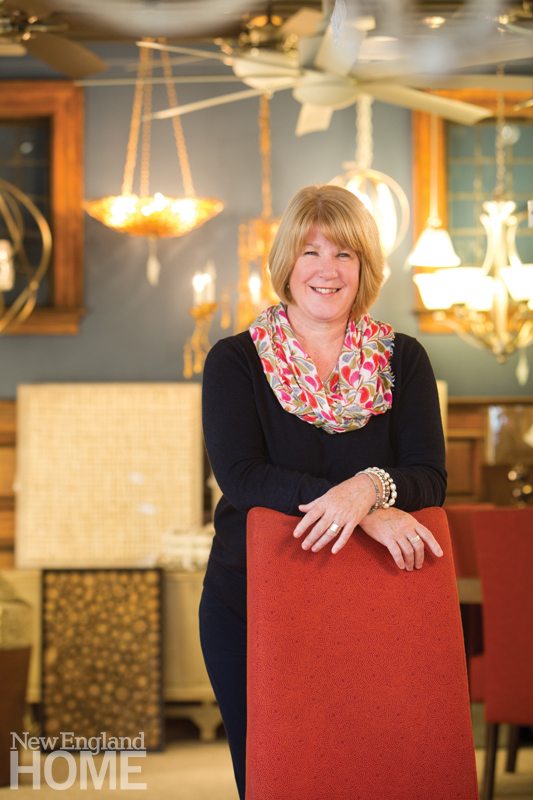Five Questions: Lucy Dearborn
January 10, 2017
Lucy Dearborn, of Lucia Lighting & Design, offers illuminating thoughts about the importance of lighting design.
Text by Robert Kiener Photography by John Soares
 1. How did you end up running a lighting showroom and a team of lighting designers?
1. How did you end up running a lighting showroom and a team of lighting designers?
Maybe it was fate; my initials are L.E.D.! I started selling lighting fixtures right after college; fifteen years later, I started my own business in 2005. I knew there was an opportunity because the North Shore is full of smart, savvy, well-traveled people who want something unique, new, and signature that speaks to their personality. I felt that my background in the business and my interest in the artfulness and the technology of lighting could offer clients
a showroom that provides a full range
of lighting solutions. To succeed in lighting today you need to be both right- and left-brained, understanding the technical side while also being creative on the art and aesthetic side.
2. You’ve expanded beyond lighting and into furniture and accessories. Why?
A lot of people who work for us have backgrounds in interior design, so they have enough knowledge to speak intelligently about it. We have a few small lines of semi-custom sectionals, sofas, accent tables, and accent chairs that people can pick up and leave with. Our showroom is a big old former mansion, and we display lighting and accessories in vignettes within a homelike setting. This helps customers and designers visualize how their lighting and furniture will work together. The noted interior designer Eileen Patterson has joined us, and she is so great at finding attractive, quality pieces at great value.
3. What is the relationship between lighting and interior design?
I believe interior designers really appreciate the value of both a good architectural lighting plan and well-appointed fixtures. Here’s a typical situation: you spend $15,000 on a rug, $10,000 on a painting, you buy gorgeous French wallpaper, but if you are in the dark, “ain’t nobody seeing nothing.” Designers are fans of lighting because it highlights their work. Lighting is a collaborative sport. If you are doing a custom lighting plan or creating a custom lighting fixture, it requires a lot of people—designer, architect, homeowner, electrician, artist—to stand in a circle and hold hands. A lighting designer has to be a collaborator by nature.
4. You design custom lighting as well as carry lines of lighting. Why this combination?
People want to spend their money wisely. When they are building or remodeling, they have a budget. They may want to spend on a signature piece, and then supplement with lighting we have in stock. Most of our orders are a combination of a signature piece or two and pieces that come off the shelf.
5. What advice or lighting tips do you give homeowners?
Don’t have too many focal points. Pick just one or two things in the room you want to highlight, and use a variety of types of lighting and at varied heights. Also, before you design your lighting, think about how you are going to use a space. Is it where you gather with adults for a martini, or where you balance your checkbook while the children play games? You can use different lighting circuits to change the appearance and mood of places. Adding dimmers is an excellent, inexpensive way to change an atmosphere. Use a lighting control panel and different circuits so you can set, and change, a room’s scene by merely pressing a button. •
Lucía Lighting & Design, Lynn, Massachusetts, (781) 595-0026, lucialighting.com
Share
![NEH-Logo_Black[1] NEH-Logo_Black[1]](https://b2915716.smushcdn.com/2915716/wp-content/uploads/2022/08/NEH-Logo_Black1-300x162.jpg?lossy=1&strip=1&webp=1)







You must be logged in to post a comment.